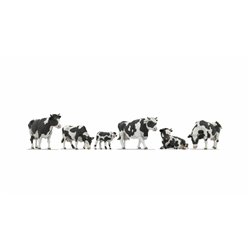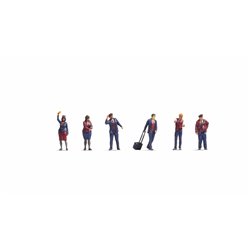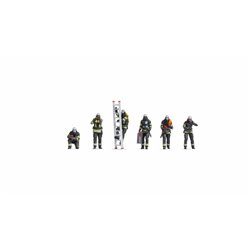There are a number of different options for attaching figures such as a horse and rider to a layout. Perhaps the...
No products
Product successfully added to your shopping cart
There are 0 items in your cart. There is 1 item in your cart.
Search Tips
Forgotten scales: exploring uncommon model railway gauges
When most people think of model railways, they tend to picture popular scales like O, OO or N gauge, which dominate the market. However, there is a whole world of lesser-known or "forgotten" scales that have been quietly gathering a niche following. These obscure gauges offer unique challenges and opportunities for modellers, often requiring a bit more creativity and ingenuity to bring layouts to life.
One of the more intriguing forgotten scales is TT gauge, or 1:120 scale. Originally developed in the 1940s, TT was once seen as the middle ground between OO and N gauge. While it's never quite achieved mainstream popularity in the UK, it has maintained a loyal following in Europe, particularly in Germany and Eastern Europe. TT's relatively compact size allows for detailed layouts in smaller spaces, while still being large enough for intricate modelling. With more manufacturers producing TT gauge items in recent years, it might be worth a second look if you're looking for something a bit different.
Another hidden gem is S gauge, at a scale of 1:64. Historically, it was popularised by American manufacturer American Flyer in the mid-20th century, but it never quite caught on in the UK. S gauge sits between OO and O scales in size, offering the perfect balance for modellers who want a layout that is detailed yet manageable. While the gauge doesn't have the same level of commercial support as other scales, modellers often find themselves crafting their own models or sourcing them from specialist suppliers. If you enjoy scratch-building or bespoke projects, S gauge could offer a rewarding challenge.
For those looking to go even larger, there's G gauge (1:22.5 scale), also known as garden railways. As the name suggests, G gauge is often used for outdoor layouts, making it perfect for modellers who want to bring their trains to life in the garden. The large scale allows for exceptional detail, and the robust, weather-resistant models are built to withstand outdoor conditions. While G gauge can be space-intensive and more costly than other scales, the sheer size and realism of these layouts can be breathtaking. If you've got the outdoor space and a flair for landscaping, G gauge might be just what you need.
At the other end of the spectrum is Z gauge, one of the smallest commercially available scales at 1:220. Developed by Märklin in the 1970s, Z gauge allows for incredibly compact layouts, making it ideal for those who don't have much room to spare. Despite its tiny size, Z gauge models can still be highly detailed, though the small components can be fiddly to work with. Z gauge is perfect for those who love the idea of fitting an entire railway scene into a small display case or briefcase, without sacrificing too much on realism.
In a hobby often dominated by a few well-known gauges, exploring these forgotten scales can breathe new life into your model railway experience. Whether you're drawn to the history, the technical challenges, or the unique possibilities each gauge offers, stepping outside the mainstream can be a rewarding way to express your creativity. So next time you're planning a new layout, why not give one of these uncommon scales a try? You might just discover a new passion.
Click here to receive the tips weekly in your mailbox. You can unsubscribe at any time.










